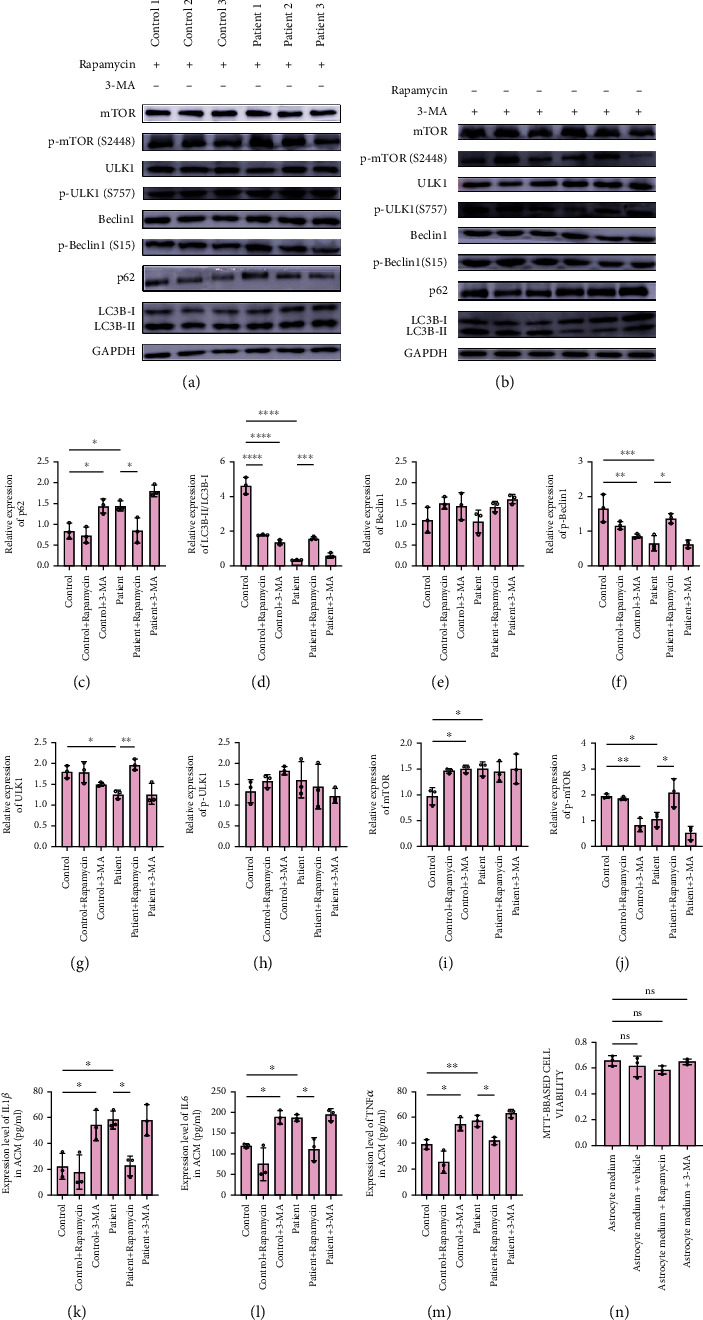Figure 4.

Effect of mTOR-autophagy pathway modulation in control and ALS astrocytes on cytokine concentration. (a, b) Immunoblots of proteins in the mTOR-autophagy pathway of sporadic ALS astrocytes and control astrocytes treated with (a) rapamycin and (b) 3-methyladenine. (c–j) Bar graphs showing the densitometric quantification of (c) LC3B-I/II, (d) p62, (e) beclin1, (f) p-beclin1 Ser15, (g) ULK1, (h) p-ULK1 Ser757, (i) mTOR, and (j) p-mTOR (Ser2448). (k–m) Astrocyte conditioned medium/ACM concentration of (k) interleukin 1β/IL1β (l) interleukin 6/IL6, and (m) tumor necrosis factor-alpha/TNFα of control and ALS astrocytes treated with or without 3-methyladenine/3-MA and rapamycin. (n) Viability of astrocytes treated with rapamycin or 3-MA. ∗ represents p < 0.05, ∗∗ represents p value < 0.01, and ∗∗∗ represents p < 0.001. mTOR: mammalian target of rapamycin; p-mTOR: phosphorylated mTOR; ULK1: Unc-51 like autophagy activating kinase 1; p-ULK1: phosphorylated ULK1; LC3B; microtubule-associated proteins 1A/1B light chain 3B; GAPDH: glyceraldehyde 3-phosphate dehydrogenase.
